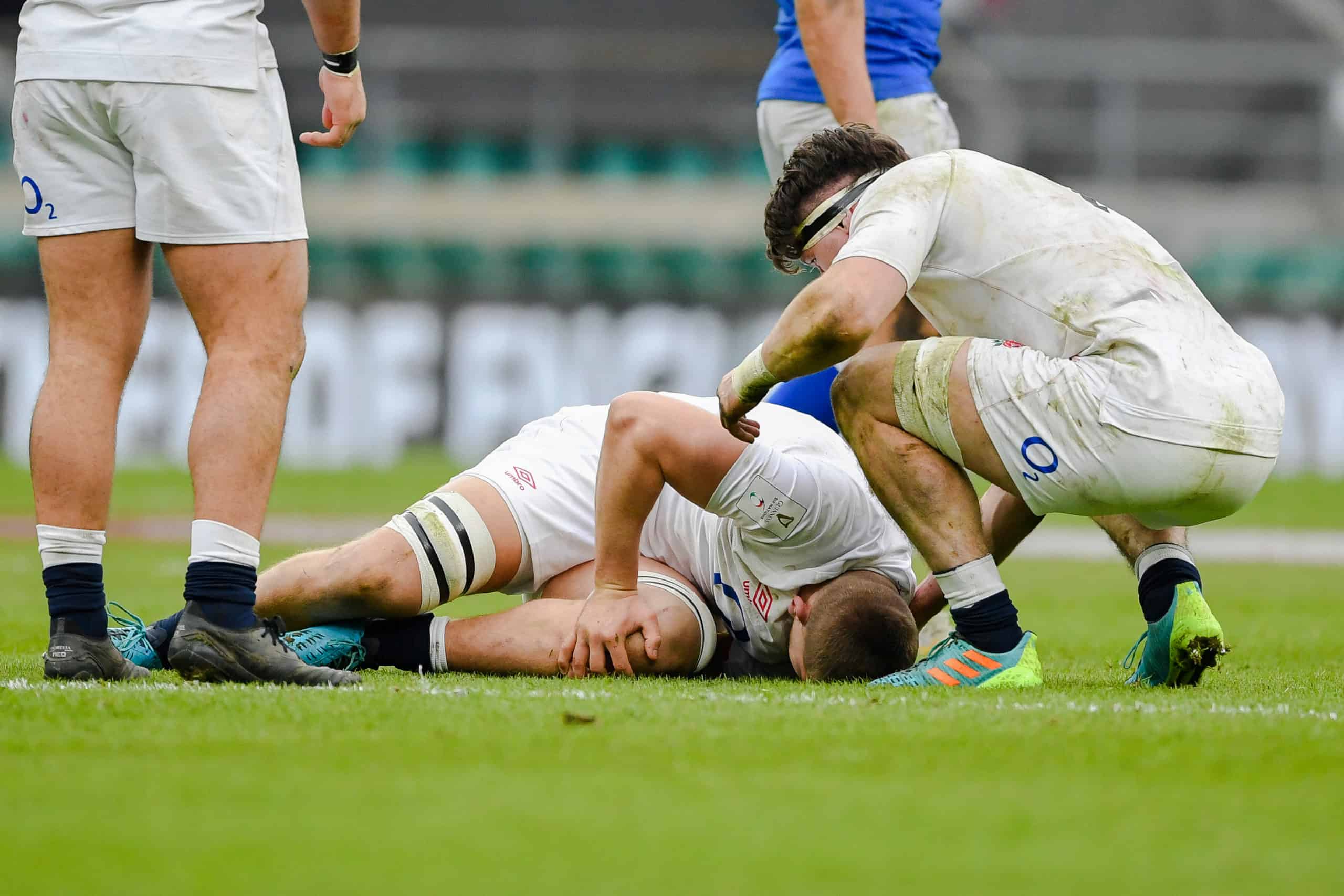Rugby is a physically demanding sport that requires a combination of strength, speed, and endurance. Despite the protective gear and rules put in place to minimize injuries, players are still prone to various types of injuries. Here are the 10 most common injuries in rugby, their causes, severity, recovery time, and ways to prevent them:

- Concussion: Concussion is a brain injury that occurs when the head is hit or when there is a sudden acceleration or deceleration of the head. Symptoms of concussion include headache, dizziness, confusion, and memory loss. Recovery time can range from a few days to several months, depending on the severity of the concussion. To avoid concussion, players should always wear protective headgear and follow the rules of the game regarding tackling and contact.
- Sprained ankle: Ankle sprains occur when the ligaments that connect the bones in the ankle joint are stretched or torn. Symptoms include pain, swelling, and difficulty walking. Recovery time can range from a few days to several weeks, depending on the severity of the sprain. To avoid ankle sprains, players should wear proper footwear with good ankle support and perform stretching exercises before playing.
- Shoulder dislocation: Shoulder dislocation occurs when the upper arm bone pops out of the shoulder socket. Symptoms include pain, swelling, and a visible deformity in the shoulder. Recovery time can range from a few weeks to several months, depending on the severity of the dislocation. To avoid shoulder dislocation, players should practice proper tackling technique and avoid landing on their shoulders.
- ACL tear: An ACL tear is a knee injury that occurs when the anterior cruciate ligament is stretched or torn. Symptoms include pain, swelling, and instability in the knee joint. Recovery time can range from several months to a year, depending on the severity of the tear. To avoid ACL tears, players should practice proper jumping and landing technique, wear proper footwear, and strengthen their leg muscles.
- Hamstring strain: A hamstring strain is a muscle injury that occurs when the hamstring muscles at the back of the thigh are stretched or torn. Symptoms include pain, swelling, and difficulty walking. Recovery time can range from a few days to several weeks, depending on the severity of the strain. To avoid hamstring strains, players should perform stretching exercises before playing and avoid sudden changes in direction.
- Broken nose: A broken nose occurs when the bones in the nose are fractured or displaced. Symptoms include pain, swelling, and difficulty breathing. Recovery time can range from a few days to several weeks, depending on the severity of the fracture. To avoid broken noses, players should wear protective headgear and avoid leading with their head during tackles.
- Dislocated fingers: Dislocated fingers occur when the bones in the fingers are pushed out of their normal position. Symptoms include pain, swelling, and difficulty moving the fingers. Recovery time can range from a few days to several weeks, depending on the severity of the dislocation. To avoid dislocated fingers, players should wear protective gloves and avoid grabbing or twisting fingers during tackles.
- Concussion-like symptoms: Some players may experience concussion-like symptoms without actually having a concussion. These symptoms can include headache, dizziness, and confusion. Recovery time can range from a few days to several weeks, depending on the severity of the symptoms. To avoid concussion-like symptoms, players should stay hydrated and follow proper tackling technique.
- Cuts and bruises: Cuts and bruises are common in rugby and can occur anywhere on the body. Symptoms include pain, swelling, and discoloration of the skin. Recovery time can range from a few days to several weeks, depending on the severity of the injury. To avoid cuts and bruises, players should wear proper protective gear and avoid contact with other players’ teeth or other exposed body parts.
- Rib injuries: Rib injuries can occur when the ribs are bruised or fractured due to impact or compression. Symptoms include pain, tenderness, and difficulty breathing. Recovery time can range from a few days to several weeks, depending on the severity of the injury. To avoid rib injuries, players should wear proper protective gear and avoid direct blows to the chest.
Overall, rugby is a sport with a high risk of injury due to the physical nature of the game. However, there are several ways to reduce the risk of injury, including wearing proper protective gear, practicing proper technique, and staying hydrated. It is also important for players to listen to their bodies and seek medical attention if they experience any pain or discomfort. By taking these precautions, players can enjoy the game of rugby while minimizing the risk of injury.
